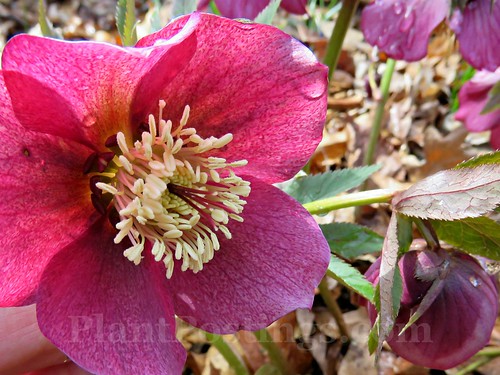
The Hellebores are blooming late this year, but the show is exceptional.
While I'm moving more in the direction of adding and encouraging native plants, I do make a few exceptions. I honestly don't have "favorite" plants, but there are oh, so many reasons I'll always want Hellebores in my garden: They thrive in shade, they're hardy to zone 4 or 5, they bloom early, they're rabbit-resistant, the list goes on.... But mainly they're simply beautiful.
I only have a few, but they're all Helleborus orientalis hybrids. (Early on, these hybrids weren't reliably named, but each is unique. One nickname for the group is Lenten Rose.) The first few, which I added many years ago, return reliably each spring.
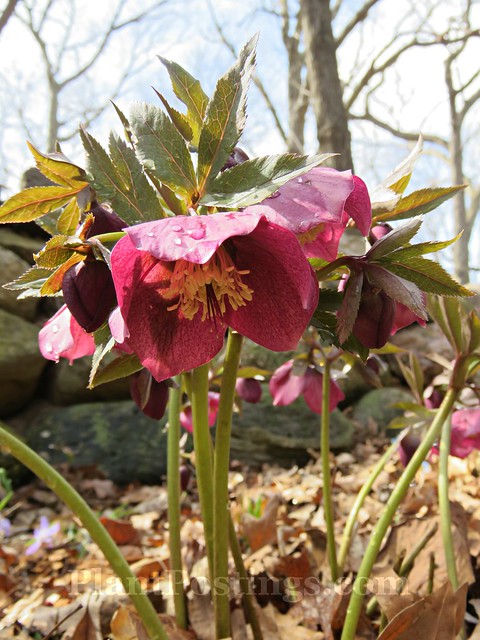
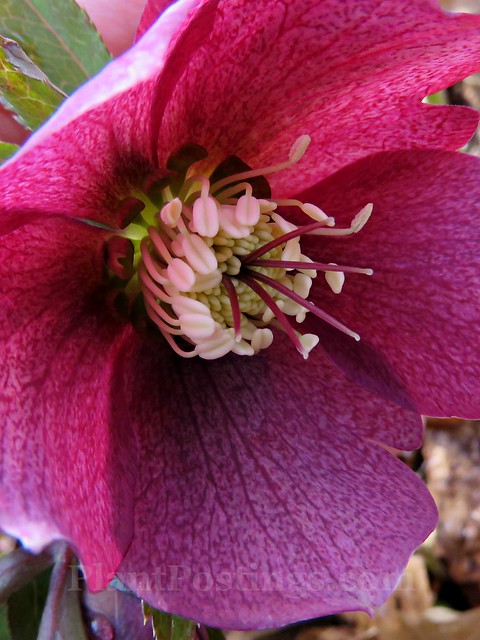
This wine-colored beauty has perfect form.

As does this deeply veined variety, which was the first hybrid I added to the garden.
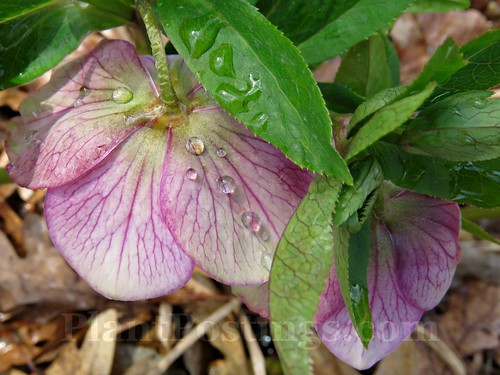
It's almost as dreamy from the top.
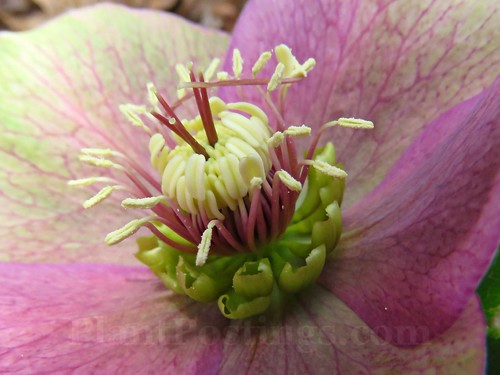
But flipping it over reveals the magic of its sepals, stamens, carpels, and nectaries.
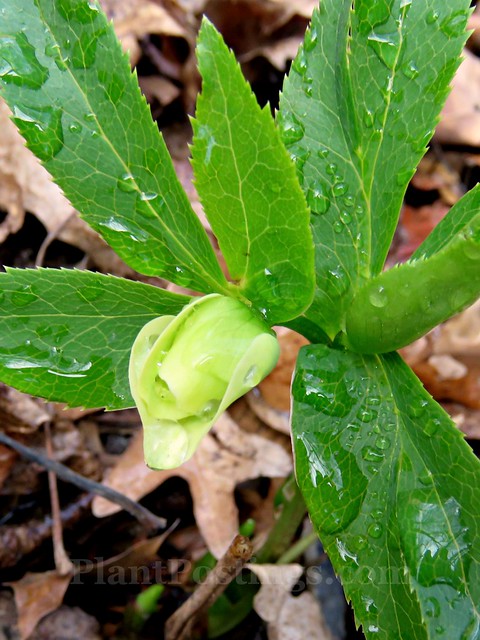
This sweet little cream-colored hybrid has been in the garden for several years, but this is the first year it's bloomed...almost.

It's diminutive and delicate, and I can't wait to see more.
Hellebores often bloom in March in Southern Wisconsin, but this year we didn't have reliably decent weather until recently. I covered these guys during our late ice and snowstorms (just two weeks ago!) to preserve the blooms. I'm glad I did for a better show now.
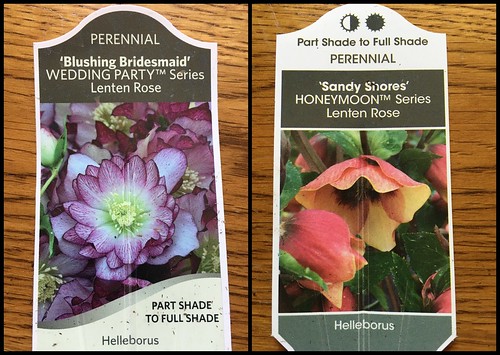
I can't seem to get enough of these lovelies. I recently purchased two more unique Hellebore hybrids, and I look forward to adding them to the garden.
you have done so well with your hellebores Beth- it's a plant I love and never succeeded with - they like lots of leaf mould being wood landers and bit more half-sun/shade in summer than a cold shady corner I have offered them
ReplyDeleteThank you, Laura. They do have plenty of leaf mould here, that's for sure. And our summers are hot, but the garden is open woodland. They are near a rock wall, which probably keeps the winter temperatures a little more bearable than would happen out in the open. I'm glad they're happy here, because I'm happy they're here. :)
DeleteWe share a love of these beautiful plants. Here they begin blooming in early February. It's wonderful how long the blooms stay and the wide variety of colors and forms is thrilling. Sorry you're having such a cold winter/spring but better late than never.
ReplyDeleteWinter is done here now, finally. We hit 81F yesterday--two weeks ago we had ice and snow. Craziness. Anyway...it's fun to watch the Hellebores start to bloom across the blogosphere, starting in late January through February. I generally expect the conditions to be right for them toward the end of March, but of course it varies. I agree: It's also great how long the blooms last, although they cycle through faster when we go directly from winter to summer, with not much spring in between.
DeleteLoved this Beth . . . aren’t they beauties!
ReplyDeleteI am adding a few more to my “Helebores patch” as well . . .
Shade, moisture, somewhat protected, I think helps them thrive . . .
I did my uncover of my Lenten Rose five days ago . . .
Although I peaked at them many times before I uncovered!
This area is near where Trillium appear . . .
And where I hope Jack In The Pulpit “happens!”
Thank you, dear Lynne. We are on a similar schedule...most of the time. And our gardens are similar, too. I peak at the Hellebores starting in December, when the buds for the following year start to form. Then I keep the leaf mulch on them until the weather warms...but as you say, peaking several times before the annual uncovering. ;-) Praying that JiPs will make an appearance for you this year!
DeleteHi Beth, Like you, I am trying to have more native plants but there are some others that I have to have! You took some beautiful pictures of your Hellebores. They're beautiful and mine have bloomed for the first time. I'm very excited about it and may need to add more.
ReplyDeleteThanks, Sally. It is exciting when plants are happy in a garden, isn't it? I'm glad your Hellebores are blooming for you, too. Happy May Day!
DeleteI love them too and I've planted quite a few of them even though they're not known to flourish in my climate. Two of mine, 'Anna's Red' and'Phoebe' have become reliable, if not prolific, spring bloomers. Sadly, those in the 'Winter Jewels' series I planted have yet to show much foliage, much less flowers.
ReplyDeleteHey Kris: That's fabulous that you've found some varieties that work in SoCal! I'm hoping these new ones will be as happy as the first two I planted. My cream-colored one was moved once, so maybe that's why it's taking some time to settle in. They are beauties, aren't they?!
DeleteI totally agree that they are great plants. That new Sandy Shores looks fabulous.
ReplyDeleteI was looking at the garden the other day, and I thought, "I think I have two perfect spaces for two more Hellebores." So, it is done. ;-)
DeleteI love your new selections. I would not be able to withstand the purchase if I saw them here.
ReplyDeleteI just couldn't walk by, Lisa! I have a spot in mind for one of them, but I'm still deciding on the other one. Some major planting will ensue after this busy weekend!
DeleteOh I adore hellebores too for the same reasons. And your new acquisitions are gorgeous....I have just begun to get baby plants from some of my more established clumps and have moved them around and they are blooming in year two! I do have one Christmas rose and the rabbits seem to like it....
ReplyDeleteI need to remember to rescue the little babies. I have some surrounding the parent plants, so thanks for the reminder to propagate them. I don't have any of the early blooming Christmas Hellebores.
DeleteBeautiful, I am looking forward to seeing more of your garden in bloom. I enjoy seeing your garden blooming as we wait UP here in Northern Wisconsin. ;-)
ReplyDeleteThanks, Carla. Believe it or not, I think you were warmer today than we were. We were in a fluky rain/cold plume that was just disgusting. Better weather for the weekend and beyond. Then the serious planting will begin! And the wildflowers will continue. :)
DeleteI , too, am a fan of hellebores. Mine have been blooming for months, and the blooms have finally all faded to greenish-white and are passing away. I will miss them. Yours are vey lovely. I want to introduce more red hellebores to my garden.
ReplyDeleteThanks, Deb. Mine are fading and seeding now, too. They seem fuller this year, so I'm very happy about that. I hope they will continue to bulk up and seed around. :)
Deletethey are lovely.
ReplyDeleteAlso when floated on water as a cut flower
I love them floated in water, too. I was too busy and traveling to do it this year, but I'll have to remember that for next year. :)
Delete
ReplyDeleteBeautiful images.
janicce.
Thank you, Janicce. They are dreamy blooms. :)
Deletedreamy is a good word to describe them. Your photos really capture their beauty.
ReplyDeleteYes, that's the adjective I always think of with Hellebores. :) Thanks!
DeleteThose are great closeups of Hellebores. They are not my favorite plant either, but I'm glad we have a few in the garden. Both the flowers and foliage have a lot to offer over a long season.
ReplyDeleteThanks, Jason. I don't have a favorite plant, but Hellebores are special in my book. I think my favorite thing about them is that they bridge the gap so beautifully between winter and spring.
DeleteVery nice. I have a few hellebores. Some were planted in the wrong place - story of my life ;) - toward the back of a foundation bed where they are getting obscured as plants closer to the front of the bed grow bigger. I think I'll have to try transplanting them this autumn. Have you had any luck transplanting hellebores?
ReplyDeleteAnd do you remove the old leaves from your hellebores? I had someone tell me to do that once. I haven't done so reliably and don't know if it's necessary for plant health, but I think it does help from an aesthetics standpoint.
PS - Be careful weeding around hellebores. You probably know this already, but I think their foliage or stems contain compounds that can cause contact dermatitis. I have experienced this while trying to pull old leaves from one of my hellebores...
Hi Aaron: I haven't had any skin irritations from the foliage, but thanks for the reminder. I do remember reading about that. To answer your questions: Yes, I did transplant that little white-flowering one and it wasn't happy. It took a couple more years to bloom. The others have been in place for about a decade. And yes--I do remove the old leaves. I always wait until the buds are about to bloom, and at the same time I remove the Oak leaf mulch that covers them during the winter.
Delete